Search Images
Browse Content (p. 1375)

Image
Coins of Kosrau I
These coins show the Sassanian "King of Kings" Kosrau I (aka Khosrow I), reigned 531-579 CE. He wears and holds a royal headband (diadem) as a symbol of kingship. Elements of earlier coins, such as the star and moon, are also incorporated...

Image
Gold Pendant Depicting Emperor Volusian
One of the simplest ways of displaying wealthiness was to wear it, as seen in this pendant made from a coin. The wealthier the wearer, the more elaborate the jewellery could be. An elaborate setting could be added to turn a gold coin into...

Image
Brooch with Coin of Emperor Honorius
Roman gold coins were set into rings, to be worn. Decorative frames were added to turn others into brooches. The image of the emperor was believed to be a good luck charm, so it made sense to carry it around all the time. Brooch made from...
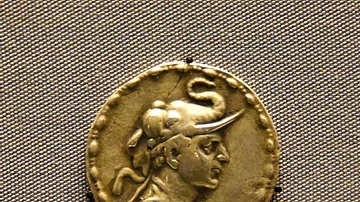
Image
Coin of Lysias
Silver coin of the Indo-Greek King Lysias Anicetus, reigned 130-120 BCE. The King wears an elephant head. From modern-day North-West India/Pakistan. (The British Museum, London).
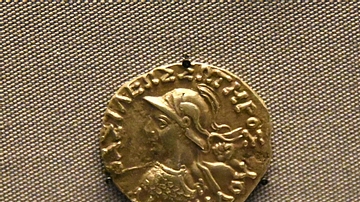
Image
Coin of Diomedes
Silver coin the Indo-Greek King Diomedes Soter, reigned 95-90 BCE. From modern-day North-West India/Pakistan. (The British Museum, London).
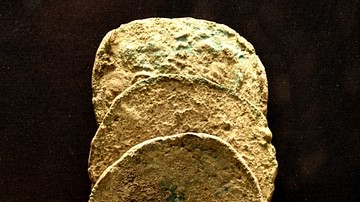
Image
Silver Ingots from Syria
A wide-spread silver trade existed in the Mediterranean before coins were introduced. Silver coins continued to follow these routes, and mixed hoards of ingots and coins were buried across the Near East and Egypt between 550 to 475 BCE. These...
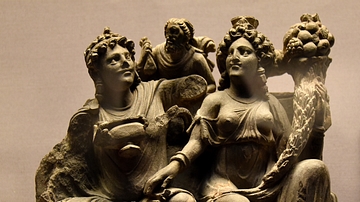
Image
Hariti & Panchika Sculpture
This sculpture shows Panchika, the Buddhist god of wealth, and Hariti, a mother goddess. The prosperity they bring is symbolized by the piles of money being poured from bags at their feet. Schist sculpture, from Gandhara, modern-day Pakistan...
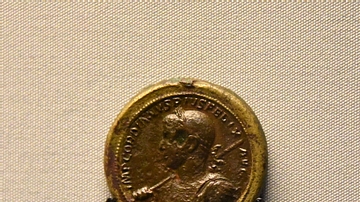
Image
Bimetallic Medallion of Emperor Gordian III
Medallions with designs similar to coins could be worn as a symbol of allegiance, or given as prestigious gifts. They were specifically intended to be attractive, as display or presentation pieces. Bimetallic medallion of the Roman Emperor...

Image
Arminius
This monument commemorates the Cherusci chief Arminius and the Battle of the Teutoburg Forest in 9 CE when the Germanic tribes under Arminius annihilated three Roman legions led by Publius Quinctilius Varus.
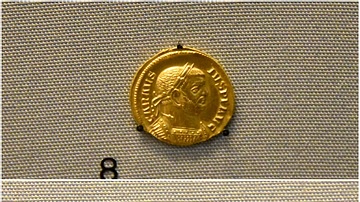
Image
Coins of Carausius
The rebel Carausius (Marcus Aurelius Mausaeus Valerius Carausius) declared himself emperor, making Britain his base. Although he had no authority in Rome, he stressed his Roman identity by citing the poet Virgil on his coins. He also used...